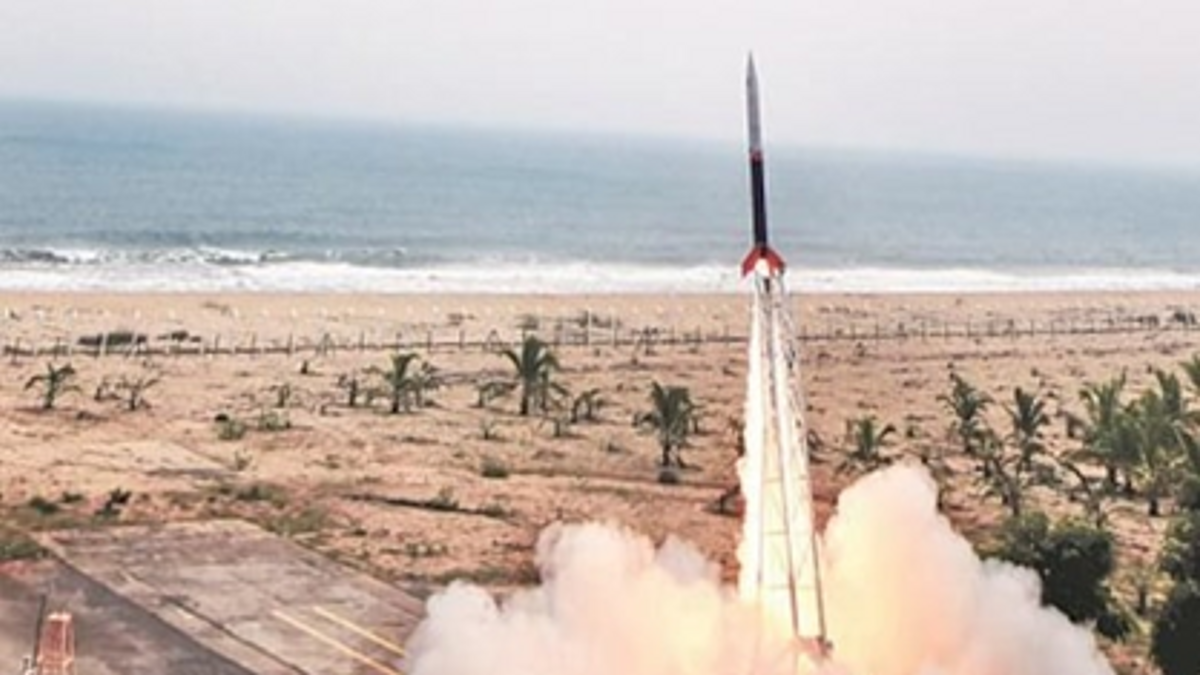
Hype on Skyroot Rocket Tech Demo
M/S Skyroot Aerospace Pvt Ltd, Hyderabad announced their rocket Technology Demonstration (TD) trials and the national media went berserk with unprecedented hype. They possibly didn’t realise what a TD trials means. Buzz was created as if there is a private rocket launch to place commercial space satellites in orbit. It meant nothing to them of ‘Demo launch’ of a ‘Sub-Orbital’ flight that they had announced. It is noteworthy for anyone to understand that no satellite can be launched in a sub-orbital rocket. Most of the TV channels also mentioned that the rocket carried 3 commercial satellites incl a foreign one.
Technology Demonstration of a new rocket becomes essential to confirm the functionalities of its several systems under the actual conditions of flight. These systems include the rocket-motors, its thrusters, total Q-max, skin temp, G-loading, speeds generated, vibrations in-flight, the navigation-guidance systems, the telemetry systems acquiring system health and in-flight data, the proper separation of the stage-motors along with timely ignition of the next, the ejection of the heat-shield covering the payload and finally the injection of the satellites in the desired orbits. The maiden Skyroot rocket had only first-stage solid-fuel motor which achieved a speed of around 5 Mach, carrying it to 89.5 Km above the Earth's surface before plunging into the Bay of Bengal. Which-all functionality were tested/evaluated in this flight, will be best known to them but it was announced that the tests carried out were satisfactory and will be useful for the actual Orbital Flight next year. Surely, there is lot to be done before the actual commercial launch of the payloads for injecting into the desired orbit.
For any rocket to place satellites in even Lower Earth Orbit (LEO), it is paramount that the rocket must ascend to such heights (usually around 300-600 Km), at near Orbital velocities (of around 7.6 – 7.8 Km/sec) to inject them in whatever orbit they select at whatever inclinations. For such tasks, rockets usually have multi-staged rockets of varying thrusts. The first stage of the rocket usually has maximum thrust to take the payload through the major part of the atmosphere encountering Q-max load. The second-third stages build the speed to a near Orbital Speed in near designated orientation when the satellites/payloads are injected. The small motor carried in the satellite then manoeuvres to fine-tune itself to obtain the final position in a perfect orbit. The maiden TD rocket had only the first-stage rocket motor that carried it to 89.5 Km height, not crossing even the Von Karman line that is considered as the lower boundary of space.
After the dust settles down over the great hype generated, M/S Skyroot has to get going with the tests and trials of their rockets in its full configuration. In all probability, another Tech Demo in the full configuration of the rocket along with its payload has to be carried out by the firm before the actual commercial mission. It is possible though to inject the payload into the desired orbit in a Technology Demo flight as well but at a huge risk of any of the system malfunctioning thus losing the precious payload.
As and when Skyroot and similar private firms fully operationalise their products and services, it will surely be a boost for India in space technologies. There is a need to be innovative towards having ‘re-use’ rockets, micro & nanotechnologies in launch vehicles and newer satellites. High-performance satellites and Human Space technologies are other areas of advancement. As of now, there are over 200-odd start-up businesses at various stages of their technologies in India. Most of them have been helped by the policies of Modi Govt under which some amount of hand-holding and offering the ISRO infra at nominal cost have been instrumental. This also helps the start-up companies by avoiding ‘re-inventing the wheels’ of some of the space-technologies. This was the dream of the Indian NDA Govt by creating Indian National Space Promotion and Authorization Center (IN-SPACe) to encourage private participation in exploiting the multibillion-dollar world commercial market.
